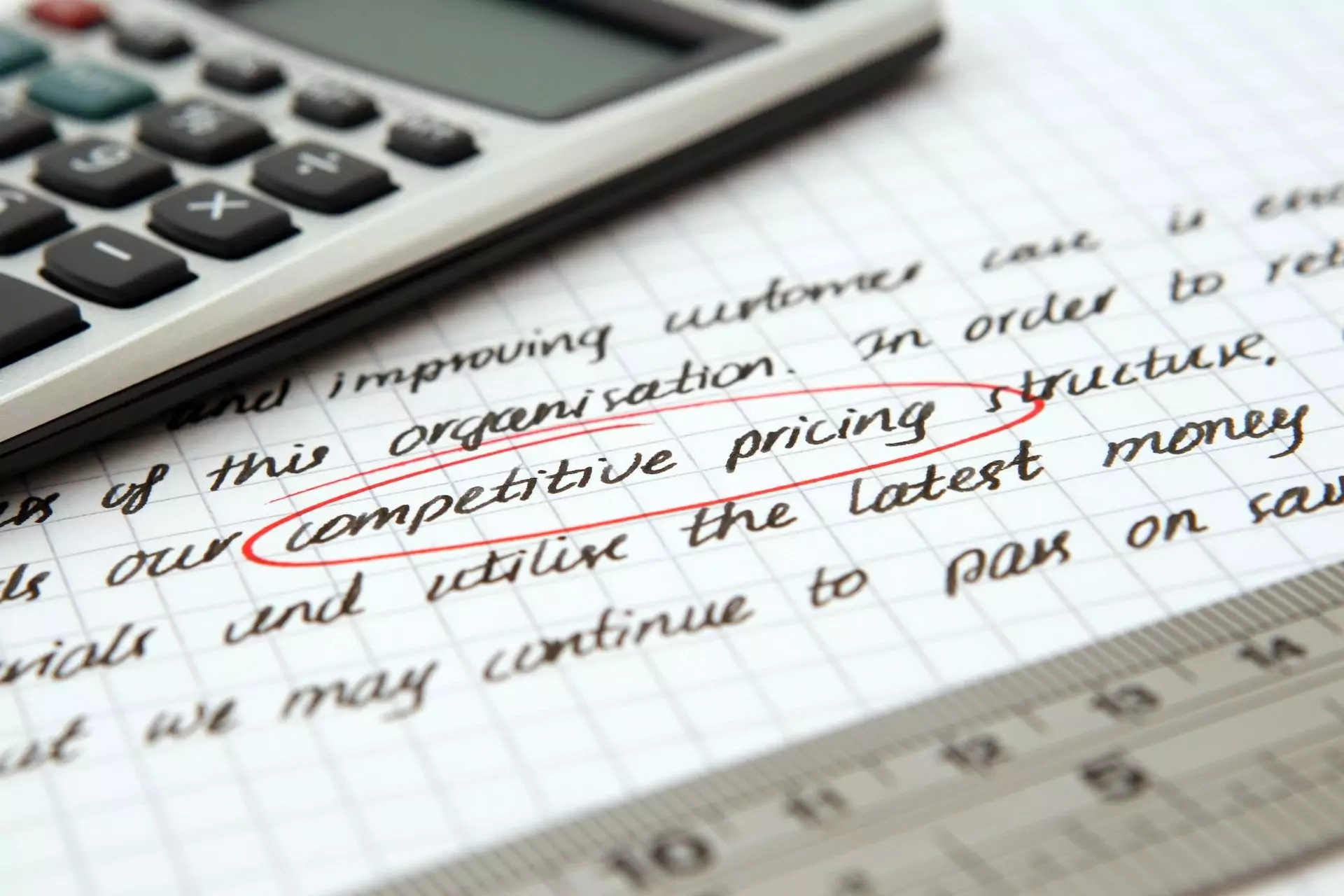Etsy Sellers | The Ins and Outs of Pricing Strategies for Etsy Sellers

From self-starter hobbyists to professional entrepreneurs, Etsy sellers often face the daunting task of determining the perfect price for their products. With several pricing strategies to consider, it’s difficult to identify the one that allows sellers to balance their bottom line with their customers’ expectations.
Are you a burgeoning Etsy seller looking for ways to stay competitive and make your mark in the ever-growing Etsy marketplace? Not to worry, in this article we’ll explore pricing strategies that can help you get an edge up on the competition and expand your customer base. We’ll examine the features of effective pricing, pricing levels, and more to ensure you have the information necessary to make informed pricing decisions.
So if you’re ready to take your sales to the next level, stick around and learn all you need to know about pricing in the Etsy marketplace!
From self-starter hobbyists to professional entrepreneurs, Etsy sellers often face the daunting task of determining the perfect price for their products. With several pricing strategies to consider, it’s difficult to identify the one that allows sellers to balance their bottom line with their customers’ expectations.
To help, here is a look at the ins and outs of pricing strategies for Etsy sellers.
Introduction to Etsy Marketplace
Etsy is an online marketplace that provides a platform for artisans and makers to sell their handmade goods, vintage items and craft supplies. First founded in 2005, it has since become one of the largest ecommerce sites in the world.
Its mission is to keep commerce human and provide more avenues of income for its sellers. Etsy users can buy and sell a range of items, including jewelry, clothing, furniture and home décor, and enjoy a secure and friendly shopping experience.
With a range of tools and features, Etsy makes setting up and managing an online store simple and enjoyable. Whether you’re a hobbyist, a professional crafter, or a vintage collector, Etsy has something for everyone.
Understanding the Etsy Marketplace Economics
Understanding the Etsy Marketplace Economics can be an intimidating proposition. An Etsy user must know how costs, profit, and customer loyalty play into their business model.
The platform is a global marketplace, allowing businesses to reach customers across the world. They charge fees when a product is listed, when a sale is made, and when a payment is received.
This can make it difficult to calculate profit margins, but the site’s analytics tools provide helpful details. It’s important to become familiar with the customer base, as there may be seasonal fluctuations in demand and customer loyalty.
Lastly, you must completely understand the Etsy marketplace and the algorithms that influence product visibility and search terms in order to increase sales.
Why pricing is Essential
Pricing is an essential tool for businesses to generate profit and growth. It represents an income source, as well as an effective way to control costs and manage the demand for products and services.
Companies can set prices to reflect their desired profit and position among competitors, while taking factors like market conditions, availability of resources and customer preferences into account. Pricing also plays an important role in customer experience, as it affects their overall perception of a business and its offerings.
Businesses must consider pricing changes carefully, to ensure that their products are optimally priced and appropriate for the target market.
Analyzing your Competition
Analyzing your competition is an essential part of strategic planning for any business. It involves researching the products, services, customer base, pricing, distribution channels, and overall sales strategies of your competitors.
By taking a comprehensive approach to competitor analysis, you can position your business for success by identifying customer groups to target, discovering untapped opportunities for growth, uncovering new opportunities for innovation, and capitalizing on any weaknesses your competitors may have. Analyzing your competitors can provide valuable insights into what is and isn’t working, making it easier to plan your own strategies and initiatives.
The Three-Tier Pricing Model
The Three-Tier Pricing Model is a dynamic pricing structure used to optimize prices for customers based on their purchasing behavior. It works by assigning customers different levels of pricing, such as Discounted, Standard, and Premium, which helps businesses increase sales and profits.
This model allows businesses to make more money by providing customers with discounts that cater to their buying habits, such as rewarding frequent buyers or targeting customers based on their geographic location. The model is highly scalable and can be adapted to different products and services.
With the Three-Tier Pricing Model, businesses capture more revenue from customers by creating personalized pricing that meets their needs.
Comparative Pricing Strategies
Comparative pricing strategies involve setting your product or service’s prices based on the prices of competitors. This strategy can ensure you remain competitive in the market and people still perceive your product as of high-value.
It can be a challenging strategy, as pricing too high could price out consumers, while pricing too low could hurt profits. To be successful with comparative pricing, consider both market conditions and analytics related to competitor pricing.
This will ensure your pricing is both competitive and profitable.
Charge What Your Product is Worth
The concept of charging what your product is worth is straightforward – set a price for your product or service that accurately reflects its true value. However, there is more to it than just determining what your product is worth.
You must also consider potential customer bases, competitive analysis, and even market trends to make sure you’re charging the right amount. You should also evaluate pricing strategies, such as variable pricing, volume discounts, and tiered pricing, to both entice more customers and increase profits.
Ultimately, you should never feel as though you’re charging too much, as charging what your product is worth ensures that you have a sustainable business.
Price Points that Attract Customer
Price points are often the deciding factor in customer attraction. In today’s market, consumers are looking for the most bang for their buck.
Companies need to identify the ideal price points to draw in customers and differentiate their products from the competition. Products that are priced too low don’t always generate sufficient profit margins, yet products that are priced too high can be out of the price range of many potential customers.
Finding that balance between profitability and customer attraction requires strategic planning and a focus on competitive pricing. In addition, periodic market research may inform a company’s pricing strategy, considering any relevant seasonal pricing trends.
Maximizing customer attraction through price points is a complex balancing act for businesses that require the help of experienced professionals to maximize returns.
Special Promotional Price Strategies
Special Promotional Price Strategies involve limited-time discounts or offers that organizations used to increase sales or encourage customer loyalty. These strategies can reward loyal customers, gain more exposure, increase customer activity and revenue, and to establish a reputation as a bargain-focused business.
Promotional strategies also help organizations gain more insight into their customers’ preferences, shopping habits, and interests, which can lead to more effective and tailored marketing strategies. They can be employed at different times throughout the year and are a great way for businesses to boost their bottom line.
Pricing Across Platforms Considerations
When considering pricing across platforms, businesses must consider a variety of complexities. A key consideration is the supply/demand relationship for each platform.
If the demand for a product or service is high, prices should be adjusted accordingly. Companies should examine their target audiences to get a better understanding of the pricing structure across each platform.
It is also important to consider the product price in relation to competitors to determine the price most likely to optimize revenue. Last, when setting a price, companies need to make sure that it is profitable.
Taking these considerations into account when pricing products across multiple platforms will ensure that businesses can capitalize on their respective markets.
Cost of Doing Business on Etsy
Selling items on Etsy can be extremely lucrative, however, it’s important to understand the costs associated with running a business on the website. Making successful sales on Etsy requires fees for things like listing items and transactions, as well as payment processing.
Besides these fees, sellers may also need to pay for advertising and promotional services. The amount of fees and payments depends on a variety of factors, and can range from just a few dollars to several hundred dollars.
To be successful, it’s essential to consider the cost of doing business on Etsy and budget accordingly.
Final Recommendations for Pricing Strategies on Etsy
After careful analysis of the current market, one of the best pricing strategies to use when selling on Etsy is to research and find similar products on Etsy and match the pricing of those similar items to stay competitive. Researching the item and examining the most popular selling features can be useful for setting a base price and then higher pricing for more features.
Setting prices at a few points of the market provides customers with options, from lower to higher priced items. Last, consider creating packages with multiple items for a discounted rate for customers looking for a better deal.
These pricing strategies can provide an added value to both customers and vendors, allowing vendors to make a reasonable profit and provide customers with the best deal possible.
In Summary
A well-thought out pricing strategy is an essential part of expanding any Etsy business and a critical component in driving profits and growth. Every seller should research and try out different strategies to find the right one for their unique shop. By properly adjusting items and offering new products with great prices, Etsy sellers can make their shop stand out, improve search rank, and boost sales. With the right combination of pricing strategies, Etsy sellers can increase their revenue and reach more customers.
Things To Do In Syracuse, NY
Syracuse, NY News

